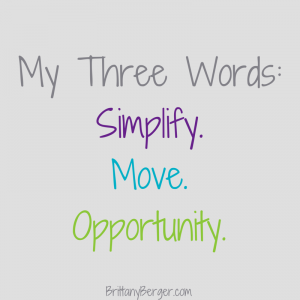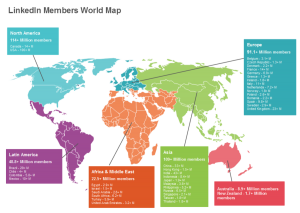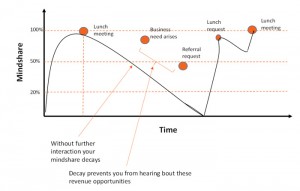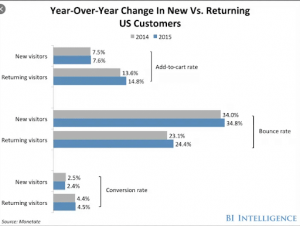
weinstock / Pixabay
More than 33.5 million (1 in 5 American workers) have filed for unemployment over the past seven weeks as states move to reopen, a number we haven’t seen since the Great Depression.
It hasn’t been easy, and it’s clear America is ready to get back to work. But that won’t be easy either. We are now navigating a recession/depression with a future that is anything but certain. COVID-19 will accelerate some existing trends toward disruption and create new ones, and all business models will have to adapt in order to grow and thrive. But there’s no way to accurately predict the coming year. What is going to be required are adaptive business models — and very focused and resilient leadership teams.
For an entire generation of business leaders, the actions they take now and in the weeks ahead will define them and their companies, according to Bain and Company: “While the impact of this crisis varies across industries and regions, it’s no exaggeration to recognize that this time around, the burden of destiny is real.”
In 2008, I was working as the chief strategy officer inside a division of a publicly-traded, Fortune 500 company. Today, I own a small business. Frankly, we weren’t prepared for either crisis. Our company certainly didn’t see the Great Recession coming, and we grossly underestimated the impact it would have on our business at the onset. Lagging optimism, unfortunately, is pretty standard downturn psychology. And I definitely didn’t factor a pandemic into my 2020 Forward Plan.
However, I am drawing on what I learned in 2008 to avoid the serious missteps made this time around. One thing I know for certain is that there will be a COVID-19 recovery and a very real opportunity on the other side of this. That was most certainly the case coming out of the Great Recession, but my company completely missed that window of opportunity — and the outcome wasn’t pretty. That is the “burden of destiny” Bain is talking about.
This time, however, I am fully intent on not missing that window. What am I doing differently? What can you do? Here are 4 keys to capturing the window of opportunity you have right now.
Develop a Compelling Vision of the Future
As we navigated the crisis in 2008, we had a problem: There was no clear and compelling vision of the future. I don’t recall any core purpose beyond “maximizing shareholder value.” As a result, we didn’t communicate compassionately, consistently, confidently or courageously. That is precisely what is required during a crisis.
Our research has found that two of the biggest drivers of engagement and commitment from employees are confident in their senior leadership and confidence in the future of the organization. You can earn that confidence right now, and everyone is watching. You can confront the brutal facts and create hope and optimism about the future at the same time. In fact, you should!
Remember, mapping head-count to revenue to preserve quarterly earnings isn’t a strategy. The response window for a crisis is typically measured in months, while recovery is measured in years. Now’s the time to model scenarios to create a long-term plan and vision for your business, fully aware that you will be agile enough to adapt when new information is available or the landscape suddenly changes.
I remain purpose-driven and confident about our future. We have a mission to help our customers create a fulfilling workplace, drive growth in their business and find meaning in their lives. How we fulfill that mission is evolving, and that is a good thing, because our work has never been more important.
Build Trust Through Transparency
If it involves people, involve them — even when you don’t have the answers or know what is coming next. You aren’t going to be perfect during a pandemic. I haven’t been, and frankly, nobody is really expecting me to. But people deserve transparency. Is it any surprise that trust in our institutions, particularly our government, is abysmal?
Hard choices and cost containment are a reality right now. But there is a right way to lead through uncertainty even when the choices required are hardly desirable.
So be transparent. It’s what is required of leaders. Be in constant communication with your team about where your business is and the factors impacting decisions that are being made. I am working with the CEO of a large, successful real estate business, and he’s been communicating with his team in a few ways that I highly recommend. He does a video chat every Friday with his team, and he also sends out video messages to his team throughout the week. He checks in. He shares his perspective, and he gives people access to him in new ways. He isn’t planning ever going back to the way things were. This is his next normal, and his team is responding.
Does that mean he has all the answers? No — and he’d be the first to tell you that. But he’s giving his team the chance to hear his perspective and engage him on questions for the future. That drives engagement and helps him preserve the culture of his firm, which, no surprise, is a massive priority for him right now. What also won’t be surprising is when they capture their window of opportunity on the other side.
Decide and Update
You may already know that I have a performance ethos I refer to as Decide and Commit. That ethos requires a very specific update during this unique moment in time:
Decide and Update.
During a downturn, disruption is accelerated, and this means there’s a penalty for making slow decisions: loss of market share.
It’s no surprise that we made slow decisions in 2008. Absent a compelling vision, leadership alignment and near-term strategy, we suffered from decision paralysis. I simply won’t let that happen again. In spite of any trepidation I might be feeling, I remind myself constantly of the need to make a decision. When I pause for too long, Lynn or my Personal Board of Directors steps in and pushes me to take action now.
I love the Jeff Bezos framework for decision-making. Amazon defines this principle on its website: “Speed matters in business. Many decisions and actions are reversible and do not need extensive study. We value calculated risk-taking.”
In his 2016 annual letter to shareholders, Bezos expanded on this idea by elaborating on the operational differences between “Day 1 companies” (his name for companies that are always operating with a beginner’s mindset, which is his preference) and “Day 2 companies” (companies that think they’ve already figured everything out). “I work in an Amazon building named Day 1, and when I moved buildings, I took the name with me,” he wrote. “Day 2 is stasis. Followed by irrelevance. Followed by excruciating, painful decline. Followed by death. And that is why it is always Day 1 at Amazon.”
Are you operating like a Day 1 or Day 2 company right now? The choice is clear. So is the outcome.
Embrace Continuous Reinvention
The “beginner’s mindset” inspires innovation. That kind of whiteboard thinking requires the ability to analyze the current situation and ask a set of tough questions with built-in assumptions about the marketplace and customers in this next normal. Here are three big questions to consider:
- How can we ride out the crisis to emerge stronger than others in our industry?
- How can the organization learn through this experience to win in the future?
- What would we do differently if we were starting on Day 1 right now?
So think about your customers and their needs. I recommend asking these three questions to get you started:
- What did our customers need prior to this?
- What do our customers need right now?
- What do we anticipate our customers’ needs will be in the future?
It’s an exercise I’ll always wish we’d done in 2008, and it’s one I’m conducting now that is inspiring tremendous optimism, energy and some pretty big thinking. I am also very privileged to do that in lock-step with some of our most valued partners and customers, and I can’t thank them enough for the opportunity and, most importantly, trust.
I know that the world will never look the same post-COVID-19. Neither will I. And this time around I predict we will be better than ever — and meet our customers’ needs in ways I never could have foreseen just a few months ago.
Business & Finance Articles on Business 2 Community
(47)
Report Post








